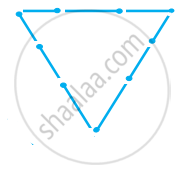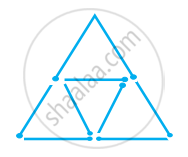Advertisements
Advertisements
Question
Name the following triangle in two different ways: (you may judge the nature of the angle by observation)

Solution
Obtuse-angled and isosceles triangle
APPEARS IN
RELATED QUESTIONS
Construct triangle ABC, when: AB = BC = 5 cm and AC = 3 cm. Measure angles A and C. Is ∠A = ∠C?
Construct traingle ABC, when : AB = BC = CA = 4.5 cm. Measure all the angles of the triangle. Are they equal?
Construct traingle ABC, when : AB = 5.4 cm, ∠A = 30° and ∠B = 90°. Measure ∠C and side BC.
Construct traingle ABC, when: BC = 3 cm, AC = 4 cm and AB = 5 cm. Measure angle ACB. Give a special name to this triangle.
In the following figure, triangle ABC is equilateral and triangle PBC is isosceles. If PBA = 20°; find angle BPC.
Construct a triangle PQR, given PQ = 6 cm, ∠P = 60° and ∠Q = 30°. Measure angle R and the length of PR.
Name the type of following triangle :
∆ABC with AB = 8.7 cm, AC = 7 cm and BC = 6 cm.
Try to construct triangles using match sticks. Some are shown here.
 |
 |
 |
Can you make a triangle with 3 matchsticks?
(Remember you have to use all the available matchsticks in each case) Name the type of triangle in each case. If you cannot make a triangle, think of reasons for it.
Try to construct triangles using match sticks. Some are shown here.
 |
 |
 |
Can you make a triangle with 6 matchsticks?
(Remember you have to use all the available matchsticks in each case) Name the type of triangle in each case. If you cannot make a triangle, think of reasons for it.
Draw a rough sketch of a regular hexagon. Connecting any three of its vertices, draw a triangle. Identify the type of the triangle you have drawn.
